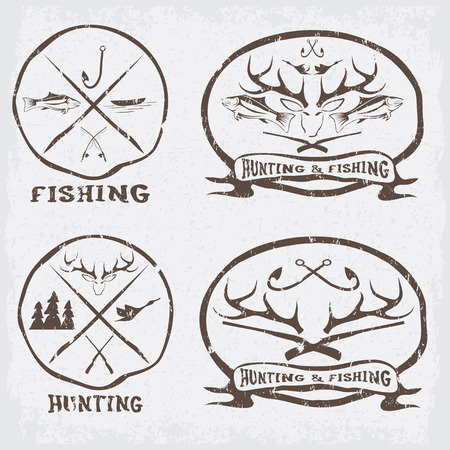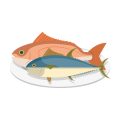Understanding the Basics of Coarse Fishing Rods
Coarse fishing is one of the most popular angling pastimes in the UK, attracting a diverse community of anglers from all walks of life. Unlike game fishing, which typically targets salmon and trout, coarse fishing focuses on freshwater species such as carp, bream, tench, roach, perch, and barbel. Each species presents its own unique challenges and requires tailored tactics to succeed, making tackle selection a vital part of any angler’s strategy.
Two of the most crucial factors when selecting a coarse fishing rod are its length and test curve. These elements directly affect casting distance, accuracy, bite detection, and your ability to play fish effectively. For example, targeting wary carp in large lakes often calls for longer rods with a higher test curve to enable long casts and control over powerful fish. Conversely, shorter rods with lighter test curves may be ideal for close-quarters work on small rivers or canals where finesse and precision are key.
Understanding why these features matter can make all the difference between an enjoyable session and a frustrating day by the water. By choosing the correct rod length and test curve for your specific target species and venue conditions, you put yourself in a far stronger position to outwit your quarry and land them successfully. In the following sections, we’ll break down how these technical aspects influence your approach and help you select the perfect rod for UK coarse fishing scenarios.
2. Choosing the Right Rod Length for UK Waters
When selecting a coarse fishing rod in the UK, the length of your rod plays a crucial role in both your casting performance and overall fishing success. The type of venue—be it rivers, lakes, or canals—significantly affects which rod length will give you the upper hand. Below is a breakdown of how these factors interact:
Venue Type and Rod Length
| Venue Type | Typical Rod Length Range | Key Considerations |
|---|---|---|
| Rivers | 11ft – 13ft (3.3m – 4m) | Longer rods help with line control, essential for trotting baits downstream and keeping line off fast-flowing water. |
| Lakes | 10ft – 12ft (3m – 3.6m) | Medium to long rods offer better casting distance and leverage when playing larger fish; shorter rods suit close-range work. |
| Canals | 9ft – 11ft (2.7m – 3.3m) | Shorter rods excel due to limited space and frequent need for precise presentation near bankside features. |
Casting Distance Requirements
The distance you intend to cast is another vital aspect. Longer rods naturally generate more leverage, allowing for longer casts—a benefit on expansive stillwaters where fish may be holding far from the bank. Conversely, shorter rods are ideal where accuracy trumps distance, such as narrow canals or intimate swims hemmed in by vegetation.
Casting Distance Guide
| Fishing Situation | Recommended Rod Length | Description |
|---|---|---|
| Short Range (up to 20m) | 9ft – 10ft (2.7m – 3m) | Suits margin work, boat fishing, or tight canal swims. |
| Medium Range (20–40m) | 10ft – 12ft (3m – 3.6m) | Versatile choice for most UK venues; balances casting power and control. |
| Long Range (40m+) | 12ft – 13ft (3.6m – 4m) | Ideal for large lakes and big rivers where reaching distant fish is necessary. |
Local Angling Styles and Preferences
The UK boasts a rich tradition of angling styles—from classic float fishing to modern feeder techniques. In many regions, local customs influence preferred rod lengths; for example, northern river anglers often favour longer rods for stick float work, while southern canal specialists may opt for compact models to negotiate overgrown banksides. It’s always worth observing what seasoned locals use and adapting accordingly.
Selecting the right rod length isn’t just about following trends; it’s about matching your equipment to your chosen venue, target species, and preferred approach. By considering these key factors, you’ll maximise your effectiveness on UK waters and ensure your kit works seamlessly with local conditions.

3. Decoding Test Curves: What Suits Your Approach?
The concept of test curve is fundamental in UK coarse fishing, often acting as the technical backbone for rod selection. At its core, the test curve measures how much weight is required to bend the rod tip to a 90-degree angle from the butt when held horizontally. This figure, usually expressed in pounds (lb), offers a reliable indicator of the rod’s power and flexibility, directly impacting casting distance, bite detection, and fish-playing capability.
For light float or feeder tactics targeting silverfish like roach or bream on local canals and stillwaters, a lower test curve—typically between 1lb and 1.5lb—is ideal. These rods provide a forgiving action, essential for using fine hooklengths and ensuring that tentative bites are translated into positive strikes. When stepping up to match waggler rods or ledgering for tench or chub, many anglers favour a test curve in the range of 1.5lb to 2lb, offering a blend of sensitivity and backbone without overpowering smaller species.
If your ambitions include specimen carp sessions on syndicate lakes or tackling barbel on fast-flowing rivers like the Trent or Severn, you’ll want a more robust setup. Here, rods with a test curve from 2.5lb upwards are common, delivering the clout needed to cast heavy feeders or PVA bags and control powerful runs amidst snags or weed beds. However, it’s vital not to overgun—using an overly stiff rod can lead to hook pulls and lost fish, particularly if your preferred approach relies on subtlety or finesse.
Ultimately, matching test curve to your intended species and methods ensures you’re equipped for both effective presentation and decisive fish playing. Consider your favourite venues, typical target sizes, and tactical preferences; then let the science behind test curves guide your final choice.
Balancing Tradition with Modern Techniques
When it comes to choosing the right length and test curve for UK coarse fishing rods, the conversation often pivots between time-honoured British preferences and the surge of modern innovation. For generations, British anglers have favoured classic rod lengths—typically between 11ft and 13ft for float fishing—paired with moderate test curves that reflect a delicate approach to species like roach, bream, or tench. The hallmark of these traditional rods lies in their parabolic action and subtle responsiveness, which suit the nuanced waters of UK rivers, canals, and stillwaters.
However, recent advancements in materials and rod engineering have introduced a range of modern options. Carbon fibre blanks, progressive actions, and lighter guides offer increased casting distance, sensitivity, and durability—attributes highly valued when targeting larger carp or dealing with challenging weather conditions. These technological improvements do not demand abandonment of tradition; instead, they provide an opportunity to blend heritage with performance.
| Aspect | Classic British Rods | Modern Innovations |
|---|---|---|
| Typical Length | 11-13ft (float), 9-10ft (ledger) | 10-12ft (compact transport), telescopic options |
| Test Curve | 1.0lb – 1.5lb for general coarse; up to 2.0lb for specimen fish | Progressive curves, fine-tuned up to 3.5lb for carp specialists |
| Main Material | Fibreglass/Traditional carbon composite | High modulus carbon fibre, nano-resin blends |
| Action | Through/parabolic action for control and feel | Semi-fast/fast tip action for power and accuracy |
Integrating Both Approaches for Optimal Results
The key to success is understanding where each style excels. Classic rods are still outstanding when finesse and subtle presentation are paramount—think winter silverfish matches on the canal or tench fishing at dawn. On the other hand, if you’re after specimen carp or need extra backbone against fast-flowing water or strong winds, a contemporary rod with a higher test curve and stiffer action could give you the upper hand.
Selecting Your Setup: A Practical Guide
- If you frequently fish intimate venues where stealth matters, lean towards classic designs with lower test curves.
- If your local waters are stocked with bigger carp or barbel, consider integrating a modern rod offering more power while retaining enough flexibility for sensitive bites.
- Don’t be afraid to mix your arsenal—a traditional float rod paired with a modern feeder rod covers most scenarios across British coarse fisheries.
The Winning Strategy
The best anglers know that success in UK coarse fishing isn’t about clinging solely to tradition or jumping headlong into new tech—it’s about making informed choices based on venue, target species, and personal comfort. By balancing both classic preferences and cutting-edge innovations, you’ll have every chance of maximising your catch rate while enjoying the quintessentially British charm of coarse fishing.
5. Practical Tips from UK Anglers
When it comes to selecting the ideal rod length and test curve for coarse fishing in the UK, nothing beats the wisdom of seasoned local anglers. Here are some hands-on tips and real-life examples to guide your choice:
Match Your Venue: Canal, River, or Stillwater?
British coarse fishing venues vary greatly. On narrow canals, many experienced anglers recommend rods between 9ft and 11ft for precise casting and manoeuvrability under overhanging trees. For large stillwaters like gravel pits, you’ll often hear anglers at the bank swearing by 12ft or even 13ft rods to achieve extra distance, especially when targeting wary carp.
Test Curve in Practice: Light vs Heavy
Local terminology such as “light tip” or “through action” frequently pops up on the bank. As one Midlands match angler puts it, “A 1.25lb test curve is my go-to for chub and bream on the Trent—delicate enough for bite detection but with backbone if a barbel shows up.” In contrast, those targeting specimen carp in southern syndicates might opt for a stiffer 2.75lb test curve rod to punch heavy leads and PVA bags far into the lake.
Don’t Overlook Local Tactics
Many UK anglers adapt their gear to suit traditional tactics like float fishing with a ‘waggler’ rod (typically 13ft for reach), or feeder fishing where a slightly shorter rod with a soft tip helps spot shy bites from roach or skimmers. If you’re unsure what works best locally, don’t hesitate to chat with regulars at your chosen fishery—they’re usually happy to share what’s working that week.
Try Before You Buy
If possible, pop down to your local tackle shop where you can often handle display rods and get advice tailored to your regular waters. As Yorkshire angler Dave C. says, “You’ll soon know what feels right after a waggle in the shop—then it’s just down to getting out there and putting it through its paces!”
6. Summary: Perfecting Your Tackle for British Coarse Fishing
Choosing the right rod length and test curve is critical for success on UK waters, where conditions, target species, and venues can vary dramatically. To recap, shorter rods (10-11ft) are ideal for tight swims or margin work, while longer rods (12-13ft) provide superior casting distance and control on larger venues. Selecting a suitable test curve is equally vital: lighter curves (1-1.5lb) offer finesse for silverfish and shy biters, whereas heavier options (2.5lb+) deliver the backbone needed for hard-fighting carp or powerful river barbel.
For strategic optimisation, always match your set-up to your chosen venue and quarry. On intimate canals or estate lakes, opt for a subtle approach with lighter gear; on expansive reservoirs or when targeting specimen fish, gear up accordingly. Pay close attention to prevailing weather and water conditions—windy days or snaggy swims might demand a sturdier rod or higher test curve. Embrace versatility by keeping a range of rods in your arsenal, ensuring youre ready for everything from delicate float fishing to robust ledgering.
Ultimately, fine-tuning your tackle to suit British coarse fishings unique demands will maximise both enjoyment and results. Regularly review your set-up based on catch rates and changing conditions, and never underestimate the value of local knowledge—fellow anglers and bailiffs often offer invaluable insights specific to UK fisheries. With these strategy pointers in mind, youll be well-equipped to adapt and excel wherever your angling adventures take you across Britain.


